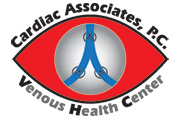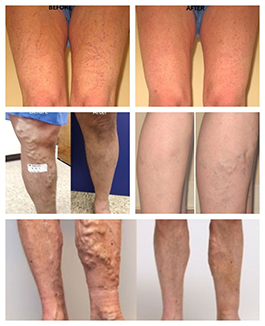 Spider Veins
Spider Veins
Spider veins are visible on the surface of the skin as small red, purple, or blue lines and are often associated with underlying varicose veins. They may look like a series of lines, tree branches or web-like in shape. Though smaller than most varicose veins, spider veins are often darker and more noticeable.
Spider veins are most commonly found on the thighs, calves, or ankles, where they become a cosmetic concern. They can cause symptoms such as tenderness, itchiness, heaviness and cramps.
Although many patients are bothered by the way they look, they can also be an indication of more serious underlying vein disease. It is important to treat underlying unhealthy veins early to halt the progression of the vein disease and to prevent complication such as edema, skin discoloration, venous ulcer or increased risk of vein thrombosis.
Certain factors contribute to the development of spider veins including heredity, pregnancy, hormonal factors, weight gain, and occupation or activities that require prolonged sitting or standing, and trauma.
Varicose Veins
Varicose veins are dilated blue or green color veins that you can see or feel beneath the skin. They often look like bluish bumps or twisted cords or may take straight path. Varicose veins serve no useful purpose in the body since they are dysfunctional. While they can develop anywhere in the body, they most commonly appear inside or on the top of the thighs, on the calves, and around ankles.



